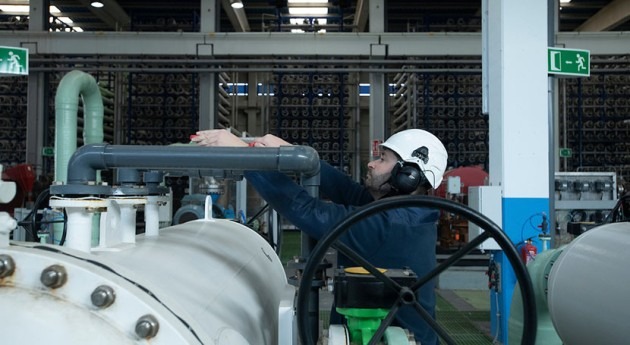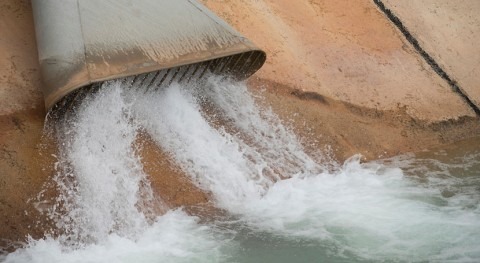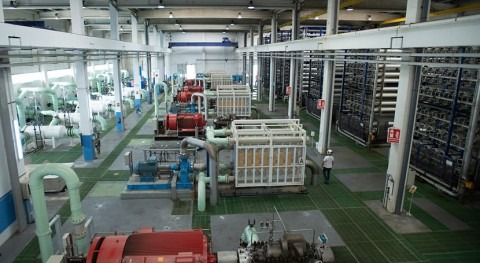Brine valorization, with its potential to address water scarcity and environmental concerns, encounters hurdles due to perceived risks, lack of proven technology, and industry conservatism. We'll try together to delve into these challenges and propose strategies to mitigate risks, spur innovation, and encourage adoption in the market.
Challenges Hindering Brine Valorization Adoption:
- Risk and Uncertainty: Brine valorization projects demand significant investment, but the lack of proven technology often deters investors. This uncertainty prompts reliance on traditional, energy-intensive methods over innovative solutions like Osmosis-Assisted Reverse Osmosis (OARO).
- Example: Collaborative Research Centers: Government-funded centers can unify academia, industry, and research institutions to pioneer advanced R&D in brine valorization. These hubs can validate innovative processes such as membrane-based separation techniques, reducing investment risk. A typical budget allocation for such collaborative centers can range from $5 million to $20 million, depending on the scope and duration of the project.
- Example: Technology Validation Programs: Industry consortia can establish validation programs to independently assess emerging brine valorization technologies. Third-party validation mitigates risk, instilling confidence in investors. The cost of such validation programs can vary, but typically ranges from $100,000 to $500,000 per project.
- Low-Value Salt Products: The market perceives salt products from brine valorization, like sodium chloride and gypsum, as low value, diminishing project appeal.
- Example: Market Diversification Initiatives: Collaborations between industry and government can explore novel applications for salt products. Identifying new markets, such as chemical manufacturing or agriculture, can enhance product value. The cost of market research and product development for diversification initiatives can vary widely, but may range from $50,000 to $200,000 per project.
- Example: Value-Added Processing Techniques: Research into processing methods like micronization or chemical modification can enhance the quality and versatility of salt products, unlocking new commercial opportunities. The investment required for implementing value-added processing techniques can vary depending on the complexity of the technology, but may range from $1 million to $5 million for pilot-scale implementation.
- Need for New Applications: To enhance economic viability, sodium chloride and gypsum require innovative applications.
- Example: Industry-Academia Partnerships: Collaborations can explore novel uses for salt products. Research into construction or energy storage applications could open lucrative markets. The cost of joint research projects between industry and academia can vary, but may typically range from $500,000 to $2 million per project.
- Example: Technology Transfer Programs: Initiatives facilitating technology transfer from research institutions to industry can streamline commercialization, enhancing adoption prospects. The cost of technology transfer programs can vary depending on the scale and complexity of the technology being transferred, but may range from $100,000 to $500,000 per program.
- Lack of Pilot Plants: The absence of pilot plants impedes the validation of brine valorization technologies at scale.
- Example: Government Funding for Pilot Projects: Grants or partnerships can fund pilot projects, providing crucial data and proof of concept. Government funding for pilot projects can vary depending on the size and scope of the project, but may typically range from $1 million to $10 million per project.
- Example: Technology Incubation Centers: Industry-led centers can provide infrastructure and support for pilot-scale testing, expediting technology development. The cost of establishing and operating technology incubation centers can vary depending on factors such as location and facilities, but may typically range from $5 million to $20 million per center.
Recognizing Industry Conservatism: The water industry's conservatism, grounded in the criticality of water resources, poses challenges to brine valorization adoption. Operational constraints and existing infrastructure hinder the integration of new ideas.
Embracing Scalability, Economics, and Communication: We have to raise crucial points regarding communication, economics, and the role of desalination plants in brine valorization. Engineers and stakeholders in desalination projects often overlook the potential of valorization due to a lack of awareness and perception of high costs. Integrating economics into industry knowledge, along with case studies, can shift perceptions. Additionally, desalination plants must recognize their role in valorization by contributing to treatment costs and potentially becoming off-takers for useful by-products.
Crucial Steps to Foster Adoption:
- Investment in Research and Development (R&D): Increased R&D investment is essential to address technology risks. Government grants and private funding can incentivize innovation. Typical R&D budgets for brine valorization projects can range from $10 million to $50 million, depending on the scale and complexity of the research.
- Development of New Applications: Collaboration between stakeholders can identify and develop new applications for salt products, enhancing economic viability. The investment required for product development and market entry can vary widely, but may typically range from $1 million to $10 million per application.
- Promotion of Pilot Plants: Prioritizing investment in pilot plants enables validation of brine valorization technologies, instilling confidence in investors. The cost of pilot plant construction and operation can vary depending on factors such as size and technology, but may typically range from $5 million to $50 million per plant.
- Encouraging Innovative Financing Models: Innovative financing mechanisms like Build-Own-Operate (BOO) projects can mitigate risks, encouraging private sector involvement. The cost of implementing BOO projects can vary depending on factors such as project size and duration, but may typically range from $50 million to $500 million per project.
Addressing challenges in brine valorization necessitates collaborative efforts and innovative solutions. By recognizing industry conservatism, embracing scalability, economics, and communication, and fostering crucial steps like R&D investment and pilot plant promotion, we can unlock the potential of brine valorization. Through concerted action, brine valorization can emerge as a sustainable solution, offering significant economic and environmental benefits.
*Disclaimer: Opinions expressed are solely my own and do not represent the views or opinions of my employer.





